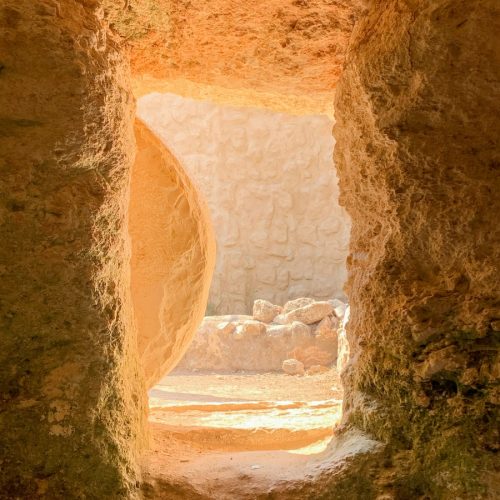The story is told of a defendant who was on trial for murder. Strong evidence indicated his guilt, but there was no corpse. In the defense’s closing statement, the lawyer, knowing that his client would probably be convicted, resorted to a trick. “Ladies & gentlemen of the jury, I have a surprise for you all. Within one minute, the person presumed dead in this case will walk into this courtroom.” He looked toward the courtroom door. The jurors, somewhat stunned, all looked on eagerly. A minute passed. Nothing happened.
Finally, the lawyer said, “Actually, I made up the previous statement. But you all looked on with anticipation. I therefore put to you that you have a reasonable doubt in this case as to whether anyone was killed, and so insist that you return a verdict of not guilty.” The jury, clearly confused, retired to deliberate. A few minutes later, the jury returned & pronounced a verdict of guilty. “But how?” inquired the lawyer. “You must have had some doubt; I saw all of you stare at the door.” The jury foreman replied, “We looked, but your client didn’t.”
True Christians believe fully & without reservation in the Resurrection. Easter this Sunday celebrates that fact, though others doubt & deny it. No one disputes 3 key truths—even critical scholars have to admit these.
1. Christ’s tomb was discovered empty by a group of women on the Sunday following the crucifixion. Even Jesus’ enemies conceded that it was & HIs body was missing. The corpse was never produced. The earliest explanation was that the body was stolen (Matt. 28:11-15). Of course, it doesn’t ring true because there were Roman guards at the tomb. Besides, no one had any motive to do that–not the Jews, Romans, or Jesus’ disciples who didn’t believe He was going to rise. That’s one of the reasons why this story rings true–if you were making up this story, wouldn’t you have everyone expecting Jesus to rise like He promised, instead of all HIs closest disciples skeptical & doubting?
2. The risen Christ appeared to many eyewitnesses–over 500 individuals, but especially those who knew Him best (1 Cor. 15:3-8). They all insisted He was alive in the very city where people saw Him crucified, & could verify His tomb was empty.
3. As a result of these disciples’ preaching about the Resurrection, the Christian church was established & grew in that same very city. Why is it that no one really knows today where that tomb is? People didn’t go there to cry, light candles, & leave flowers because He wasn’t there! Who cares? He’s alive!
Besides this profound direct evidence, strong supporting or circumstantial evidence also exists. If the Resurrection were made up, no one would have made women the first witnesses. Why? Women couldn’t legally testify because it their testimony was considered worthless back then. They would have made the witnesses men. And if it were made up, they’d have had men like Peter & John there to actually witness the Resurrection as Jesus walks out of the tomb. But no one was there to see it–Jesus appears to the men later.
Those disciples were transformed by the Resurrection–going everywhere spreading this message, enduring persecution, torture & martyrdom. Nobody would do that for what they know to be false. Jesus’ skeptical half brothers, James & Jude, became believers. People began being baptized to “die, be buried, & rise with” Christ from a watery grave (Rom. 6:3-6).
The Jews who accepted Christ did something astounding when they changed the day of worship from the Sabbath to Sunday. Something really big must have caused that! What else except to honor the day of His Resurrection (Mark 16:9)?! They also shared in weekly communion, eating bread & drinking fruit of the vine to not only memorialize His sacrifice but to proclaim their faith in the risen & soon-returning Lord of life!
Evidence also includes the conversion of enemies like the Jewish scholar & persecutor of Christians, Saul of Tarsus. He wanted to stamp out what he believed was a false religion until He was confronted by the risen Christ, and became a believer. Then known by his more Gentile name, Paul, he became a fierce missionary of the Gospel, starting churches all over the Mediterranean world, & writing much of the New Testament. All these eyewitness accounts were written very early, not centuries later as a myth, but within just a few years.
Myths don’t stand up in a court of law, but what if I told you that the Resurrection of Jesus could? If this case were to go to trial, eminent legal minds would be able to present the evidence for the Resurrection such as Professor Emeritus in law at University of Bedfordshire, England, & noted apologist, Dr. John Warwick Montgomery, who argues: “If one compares the New Testament documents with universally accepted secular writings of antiquity, the New Testament is more than vindicated.” Additionally, “It passes the bounds of credibility that the early Christians could have manufactured such a tale and then preached it among those who might easily have refuted it simply by producing the body of Jesus.”
Simon Greenleaf helped to put Harvard Law School on the map. Today, the U.S. judicial system operates on the rules of evidence established by Greenleaf. Professor Greenleaf, as an atheist, said that the Resurrection of Jesus Christ was simply a legend. He thought miracles to be impossible. But when he was challenged by his students to apply his own rules of evidence to the facts, he began an investigation into whether the Resurrection account was false. Greenleaf arrived at his verdict that the Resurrection really happened, & became a Christian.
Anyone who begins with the naturalistic assumption that the Resurrection couldn’t be true may never be convinced otherwise. But those who are open to the supernatural & are willing can look at the evidence & decide it makes more sense to believe than not to.


